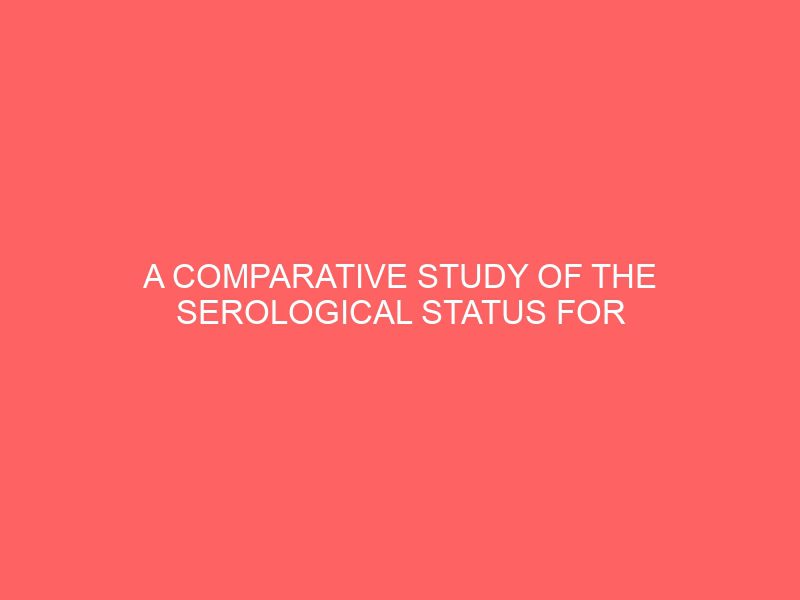Description
CHAPTER ONE INTRODUCTION AND LITERATURE REVIEW 1.1 Introduction Newcastle Disease (ND) is the most important viral disease of poultry in the world including developing countries (Adene, 1999; Spradbrow, 1997). In Africa and Asia ND is a major constraint against the development of both industrial and village poultry production (Alders et al., 2001). ND has been reported as one of the greatest constraints to the development of rural poultry production in Nigeria (Shamaki et al., 1989; Oladele et al., 2003). ND is a highly contagious and commonly fatal ribonucleic acid virus infection of birds which can cause up 100 percent mortality in susceptible chickens. Many avian species may become infected but dramatic losses are seen most often in domestic fowl and to a lesser extent in turkeys and Pheasants (Rosenbeger, 1981; Vickers and Hanson, 1982; Gordon and Jordan,1982) ND is caused by avian paramyxovirus type-1(APMV-1) which is classified with other paramyxoviruses in the genus Avulavirus, subfamily paramyxovirinae, family paramyxoviridae, and order mononegavirales. It is an enveloped virus and has a negative sense single strand RNA genome (Lamb et al., 2005). The genome contains six genes 31-MP-P-M-F-HN-L-51 that encode six major proteins: nucleoprotein, phosphoprotein, matrix protein, fusion protein, haemmaglutinnin-neuraminidase, and RNA-dependent RNA polymerase (Chamber et al., 1986; Alexander, 2008). Beard and Hanson (1984) classified Newcastle disease virus strains into highly virulent (Velogenic), intermediate virulent (Mesogenic) or avirulent (Lentogenic) based on their pathogenicity in chickens. Lentogenic strains produce mild or inapparent respiratory infections; the mesogenic strains produce low mortalities, acute respiratory disease and neurological signs in some birds while the velogenic strains which can be either neurotropic velogenic NDV (NVNDV) or viscerotropic velogenic NDV (VVNDV) cause disease with high mortality (Huang et al., 2004; Piacenta et al., 2006). The known surface antigens are the haemagglutinin and neuraminidase (Nagai et al., 1976) and the fusion (F) protein. The first, haemagglutinin-neuraminidase (HN), is important in the attachment and release of the virus from the host cells, in addition to its role in serologic identification (Beard and Hanson, 1984; OIE, 2008). The other, the fusion (F) protein, has a critical role in the pathogenesis of the disease (Beard and Hanson, 1984; OIE, 2008). ND may be employed as an antigen in a wide variety of serological tests, enabling neutralization or ELISA or HI tests to be used for diagnosis (Aiello et al., 2003) According to FARD (2008), the poultry population of Nigeria is estimated to be 137.6 million, with backyard poultry population constituting 84% (115.8million) and exotic poultry 16% (21.7 million), with a higher percentage of this poultry raised for subsistence production. Ogundipe (1998) reported that close to 75% of Nigerian population live in rural areas where most households keep small number of local and village chickens which scanvage on free range and usually taken care of by women and children. Establishment of the disease status in Nsukka is therefore of great importance to avoid economic losses caused by the disease. 1.1.1 Statement of Problem ND is rated as one of the greatest constraints to the development of rural poultry production in Nigeria and in most developing countries, causing serious threats (Shamaki et al., 1989; Oladele et al., 2003). In Africa and Asia, ND is a major constraint against the development of both industrial and village poultry production (Alders et al., 2001) Despite the numerous roles of village chickens in the life of the poor rural families such as provision of meat and eggs, food for special festivals, offerings for traditional ceremonies, pest control and petty cash for purchase of medicines and payment of school fees (Alders and Spradbrow, 2001), ND is responsible for high economic losses due to high mortality, morbidity, stress, decreased egg production and hatchability (Alexender, 2003). 1.1.2 Aim of the Research To determine the prevalence of Newcastle disease virus in local chickens within Nsukka Area and its environs.







